Exercises for Flat Feet
- Outside Ankle Pain: Running, Standing, Walking - February 14, 2024
- Plantar Fasciitis Taping - January 30, 2024
- Peroneal Tendonitis Taping - January 30, 2024
Flat Feet are medically known as pes planus. They can be genetic, or you can develop flat feet over time. Adult-acquired flat feet are the result of muscle weakening over a period of time. We created this article to provide exercises you can use to improve the strength of your feet.
Below are the best strengthening and stretching exercises we provide our patients with Adult-Acquired Flat Feet.
1: Strengthening Exercises
One of the leading causes of flat foot deformity is the slow progressive weakening of the muscles around the ankle and foot. This can result from an old injury, or the weakness can slowly develop through a lack of use. Muscle strengthening exercises can reduce pain levels and increase your arch height to fix your flat feet. All of these exercises should be pain-free to carry out. Repetitive, frequency and consistency are essential for at least 12 weeks to notice considerable changes in your arch height.
Posterior Tibialis Strengthening Exercise

- In a seated position, place the affected ankle over the opposite knee
- Place a band around both feet
- Point the toes of the affected foot and lift them against the band’s resistance.
- Slowly return to your starting position to complete one repetition
- Band Colour: Yellow
- Repetitions: 15
- Sets: 3
- Frequency: Once daily
Soleus Calf Raises
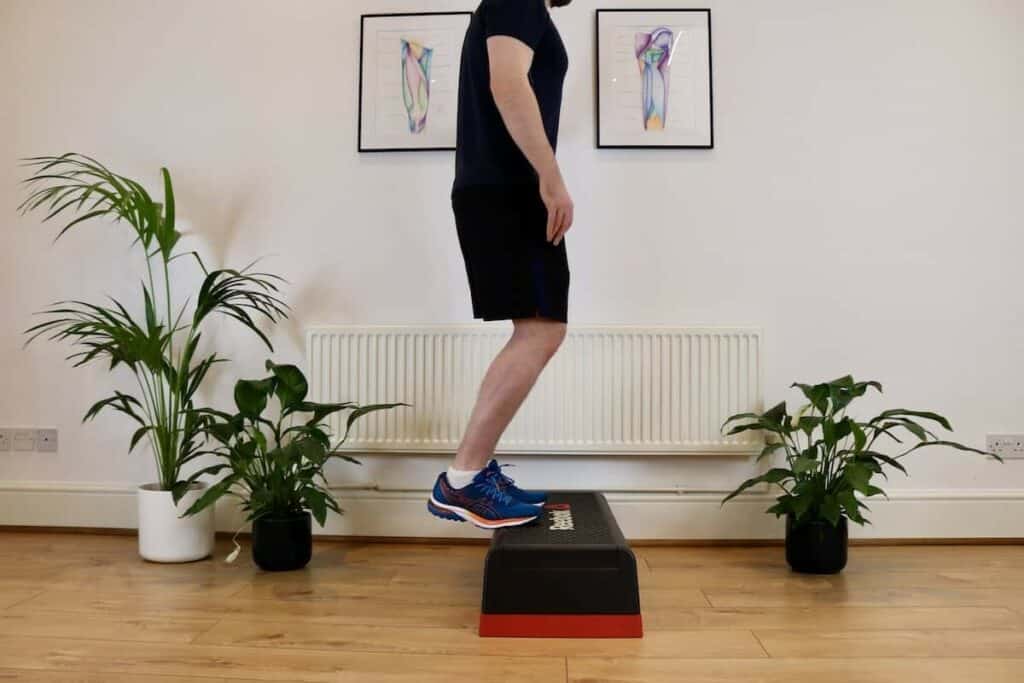
- Stand upright with both knees bent on the edge of a step
- Maintain the bend in your knees while lifting your heels off the floor
- Slowly return to your starting position to complete one repetition
- Repetitions: 25
- Sets: 3
- Frequency: Once daily
Flexor Hallucis Longus Strengthening
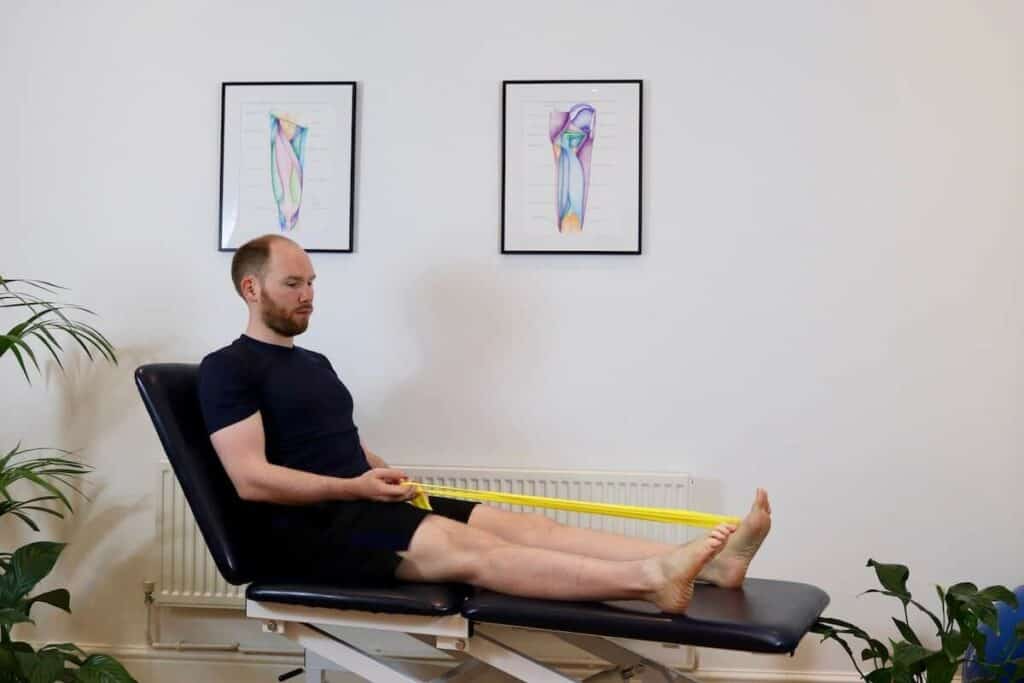
- Wrap a resistance band around the big toe
- Lower the big toe to the floor against the resistance band, keeping the other toes still.
- Slowly release the big toe up
- Repetitions: 25
- Sets: 3
- Frequency: Once daily
2: Ankle Stretches
The calf muscle comprises two muscles: the Gastrocnemius and the Soleus muscle. Their primary functions are to plantarflex the foot and act as stabilisers of the foot and ankle. If their muscles become too tight, they can place extra stress on the foot’s arch and reduce its height. We have provided two stretches to help elongate each of these calf muscles.
Soleus Muscle Stretch
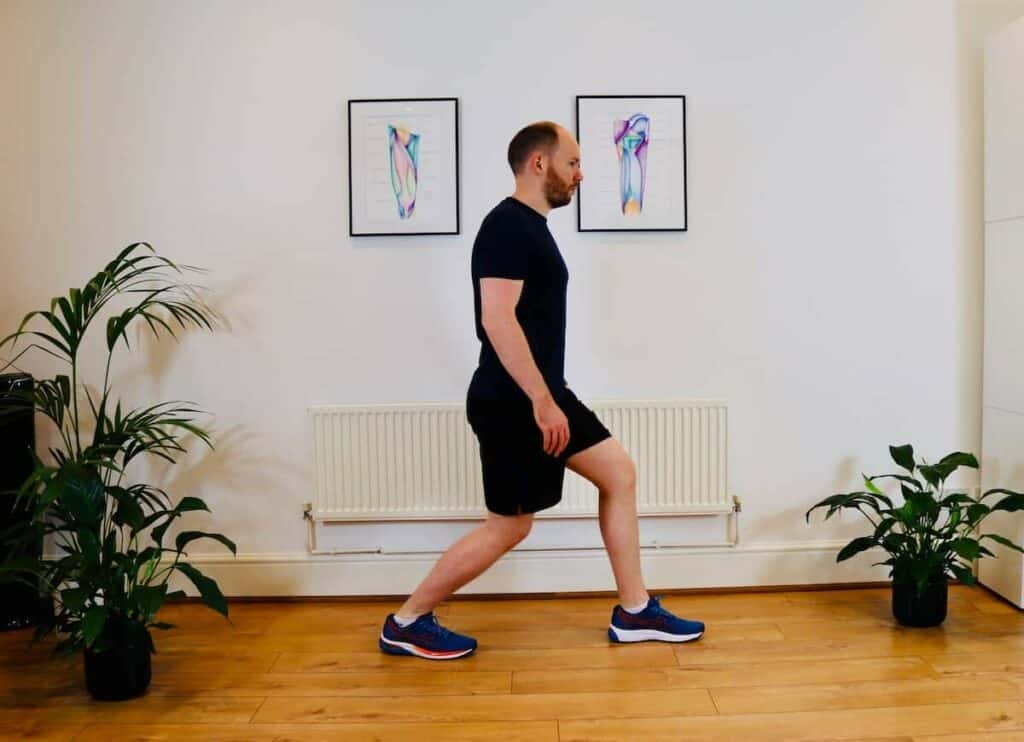
- Stand upright with the affected leg behind you
- Bend the back leg while keeping your heel on the floor
- Stop and hold when you feel a pull on the back of your leg
- Hold for 45 seconds
- Repeat 3-4 times daily.
Gastrocnemius Stretch
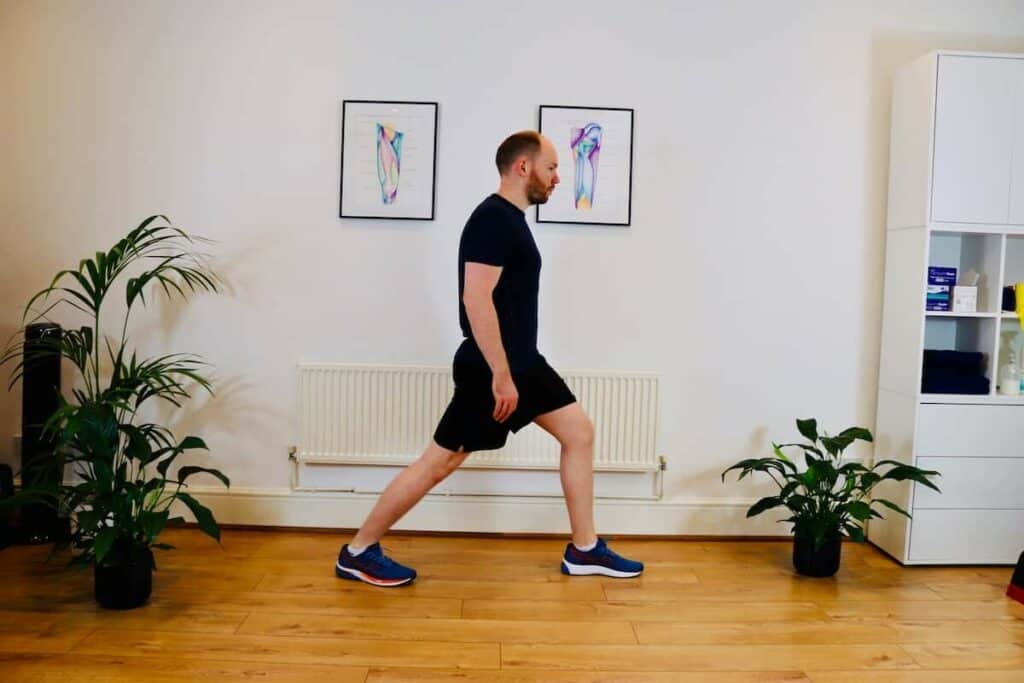
- Stand upright with the affected leg behind you.
- Keep the knee straight on the leg behind with a slight bend on the knee in front.
- Move forward on the front leg while keeping both heels on the floor
- Stop moving forward once you feel a stretch on the back leg
- Hold for 45 seconds
- Repeat 3-4 times daily.
Plantar Fascia Stretch
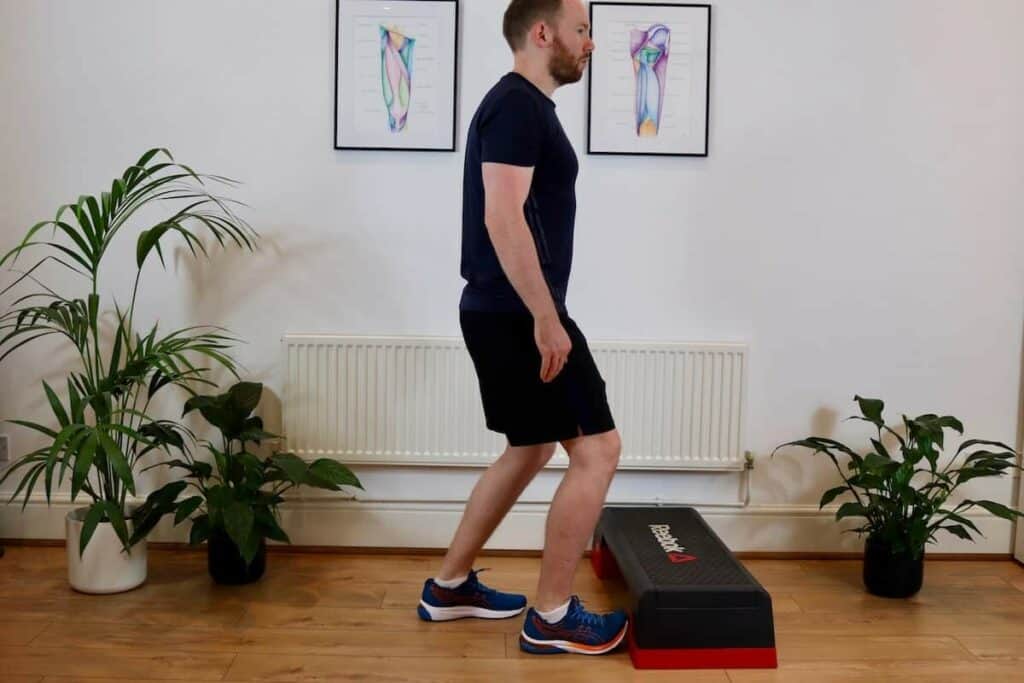
- Stand upright and place your toes extended against a step or a wall.
- Bend your knee over your foot until you feel a stretch
- Hold for 45 seconds
- Repeat 3-4 times daily.
_______________________________________________________________________
We are specialists in treating foot conditions such as Heel Spurs, and you can see one of our Foot and Ankle Specialists in our clinic in Fulham, South West London.
Related Articles
Best Insoles for Flat Feet – Best Hoka Shoes for Flat Feet – Foot Pain Chart
Feel Good, Move Well, Be Better
